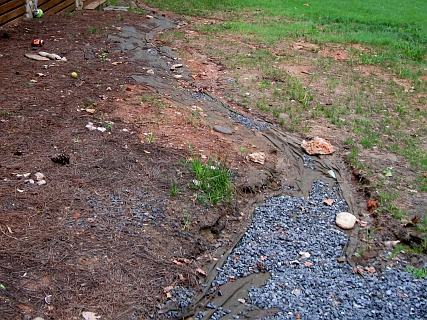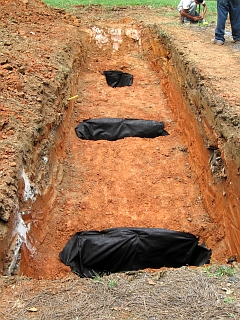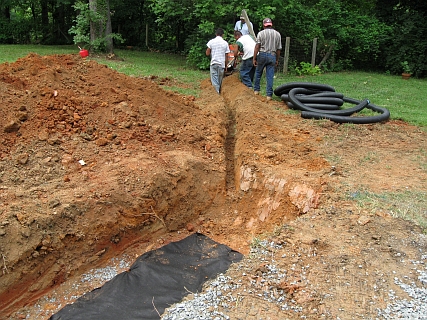
LID Stormwater BMP Design, Installation, Maintenance and Inspections
Stormwater LID BMPs: What are they?
BMP stands for Best Management Practices. Collectively referred to as "BMPs", they are devices that control stormwater flows around developed areas like housing, commercial, or retail buildings. Concentrated runoff from impervious areas on a site is collected (often in a retention pond) and either flows through through a large pipe to a creek or infiltrates below the pond into the soil.
LID stands for Low Impact Development. LID BMPs, like bioretention cells or Rain Gardens, refer to BMPs that split up a typical large wet pond into smaller pieces that are integrated into a site's landscape. Plants are integrated in these BMP's remove pollutants from the runoff and are designed and sized for site-specific conditions that meet current regulations.
LID BMPs are fast becoming an excellent way to meet stormwater regulations in tight developments, allowing for a maximization of land use. LID BMPs allows your landscape to work for you, performing a critical function as well as improving aesthetics.
Additional performance can be achieved integrating pervious pavement in low traffic areas like parking lots and sidewalks.
Design and Installation
Estes Design has experience designing and installing Low Impact Development (LID) Best Managemened Practices (BMP's) including rain gardens, bioretention cells, bioinfiltration cells, wet retention ponds, dry detention ponds, swales and other LID devices.
Estes Design can design and install LID structures for a variety of applications. Many projects qualify for cost-share programs. Contact us for details!
Construction of a residential bioretention/rain garden LID BMP:
- Multi-family housing developments
- Single family housing developments
- Single family residential lots
- Mixed-use developments
- Commercial developments
- Parks or other small developments interested in LID education


Erosion from concentrated runoff. A rain garden will intercept the runoff.


Pits encourage infiltration. An overflow drain is added for heavy storms.


Well-draining soil fills the Rain Garden. Native Plants remove nutrients from the runoff.
Inspections and Maintenance
Most Stormwater BMPs need annual inspection after they are constructed. Estes Design personnel are qualified Charlotte Mecklenburg Certified Site Inspectors (CMCSI) and are registered as landscape architects in NC, SC, and KY to sign annual inspection reports as required by many municipalities.
Sometimes, stormwater BMPs are not constructed correctly and can have a variety of functional problems. If you have a BMP that is not performing as it was designed, Estes Design can assess the problem and retrofit your project.